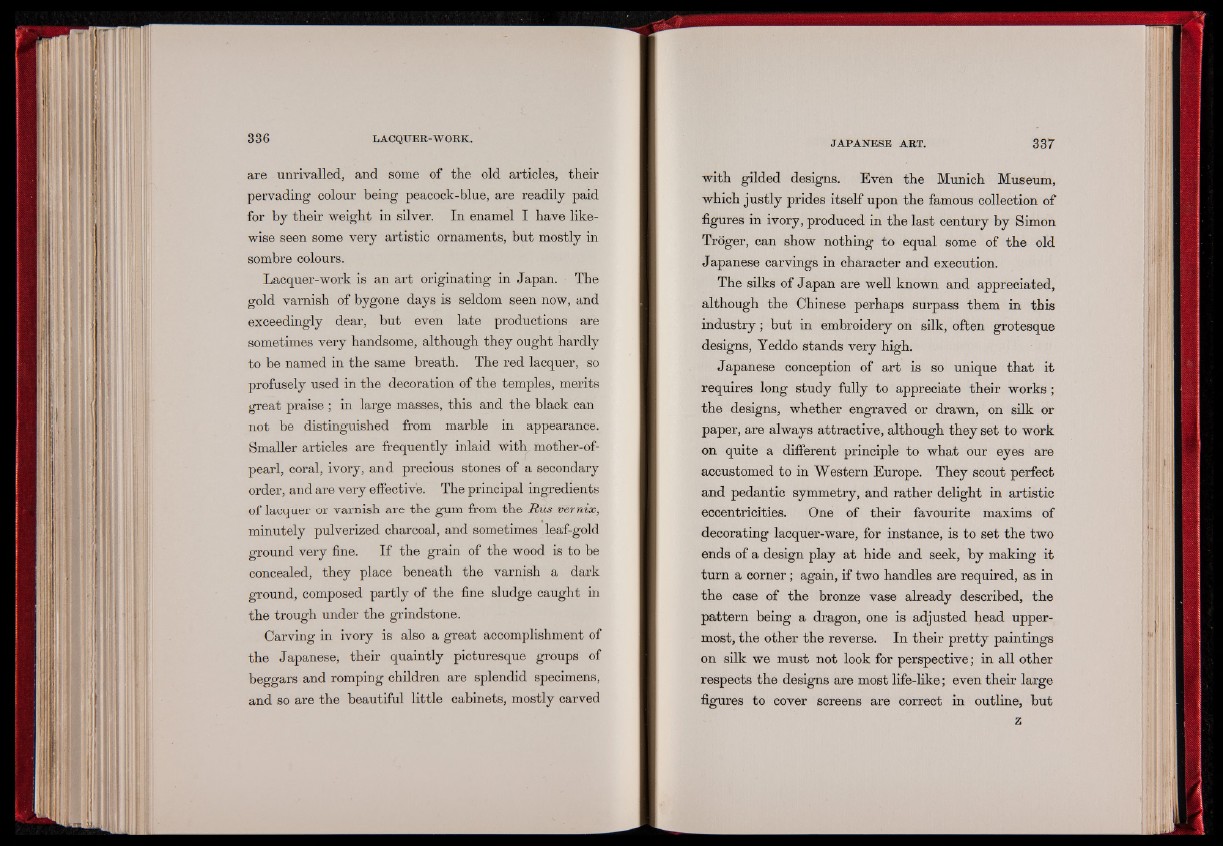
axe unrivalled, and some of the old articles, their
pervading colour being peacock-blue, are readily paid
for by their weight in silver. In enamel I have likewise
seen some very artistic ornaments, but mostly in
sombre colours.
Lacquer-work is an art originating in Japan. The
gold varnish of bygone days is seldom seen now, and
exceedingly dear, but even late productions are
sometimes very handsome, although they ought hardly
to be named in the same breath. The red lacquer, so
profusely used in the decoration of the temples, merits
ureat praise ; in large masses, this and the black can
not be distinguished from marble in appearance.
Smaller articles are frequently inlaid with mother-of-
pearl, coral, ivory, and precious stones of a secondary
order, and are very effective. The principal ingredients
of lacquer or varnish are the gum from the Rus vernix,
minutely pulverized charcoal, and sometimes leaf-gold
ground very fine. If the grain of the wood is to be
concealed, they place beneath the varnish a dark
ground, composed partly of the fine sludge caught in
the trough under the grindstone.
Carving in ivory is also a great accomplishment of
the Japanese, their quaintly picturesque groups of
beggars and romping children are splendid specimens,
and so are the beautiful little cabinets, mostly carved
with gilded designs. Even the Munich Museum,
which justly prides itself upon the famous collection of
figures in ivory, produced in the last century by Simon
Troger, can show nothing to equal some of the old
Japanese carvings in character and execution.
The silks of Japan are well known and appreciated,
although the Chinese perhaps surpass them in this
industry; but in embroidery on silk, often grotesque
designs, Yeddo stands very high.
Japanese conception of art is so unique that it
requires long study fully to appreciate their works ;
the designs, whether engraved or drawn, on silk or
paper, are always attractive, although they set to work
on quite a different principle to what our eyes are
accustomed to in Western Europe. They scout perfect
and pedantic symmetry, and rather delight in artistic
eccentricities. One of their favourite maxims of
decorating lacquer-ware, for instance, is to set the two
ends of a design play at hide and seek, by making it
turn a corner; again, if two handles are required, as in
the case of the bronze vase already described, the
pattern being a dragon, one is adjusted head uppermost,
the other the reverse. In their pretty paintings
on silk we must not look for perspective; in all other
respects the designs are most life-like; even their large
figures to cover screens are correct in outline, but